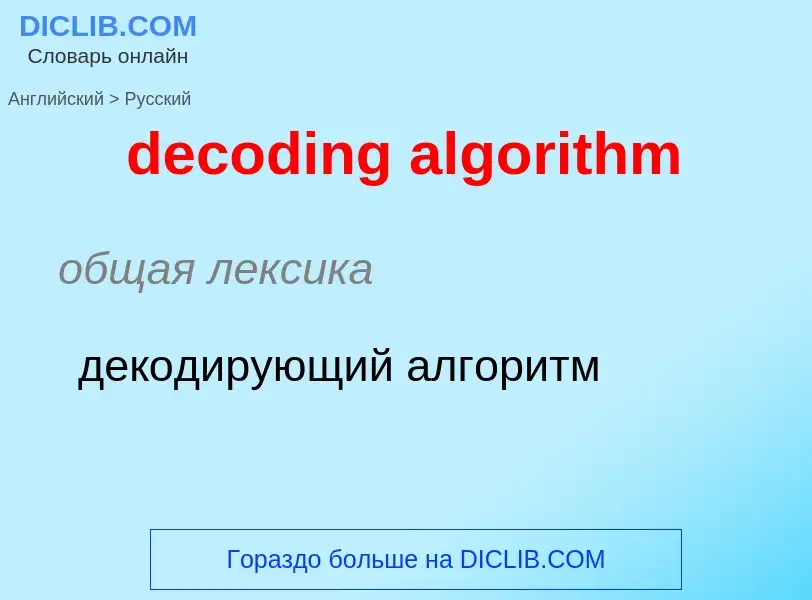Übersetzung und Analyse von Wörtern durch künstliche Intelligenz ChatGPT
Auf dieser Seite erhalten Sie eine detaillierte Analyse eines Wortes oder einer Phrase mithilfe der besten heute verfügbaren Technologie der künstlichen Intelligenz:
- wie das Wort verwendet wird
- Häufigkeit der Nutzung
- es wird häufiger in mündlicher oder schriftlicher Rede verwendet
- Wortübersetzungsoptionen
- Anwendungsbeispiele (mehrere Phrasen mit Übersetzung)
- Etymologie
decoding algorithm - Übersetzung nach russisch
общая лексика
декодирующий алгоритм
Wikipedia
The forward–backward algorithm is an inference algorithm for hidden Markov models which computes the posterior marginals of all hidden state variables given a sequence of observations/emissions , i.e. it computes, for all hidden state variables , the distribution . This inference task is usually called smoothing. The algorithm makes use of the principle of dynamic programming to efficiently compute the values that are required to obtain the posterior marginal distributions in two passes. The first pass goes forward in time while the second goes backward in time; hence the name forward–backward algorithm.
The term forward–backward algorithm is also used to refer to any algorithm belonging to the general class of algorithms that operate on sequence models in a forward–backward manner. In this sense, the descriptions in the remainder of this article refer but to one specific instance of this class.


![Alan Turing's statue at [[Bletchley Park]] Alan Turing's statue at [[Bletchley Park]]](https://commons.wikimedia.org/wiki/Special:FilePath/Alan Turing.jpg?width=200)




